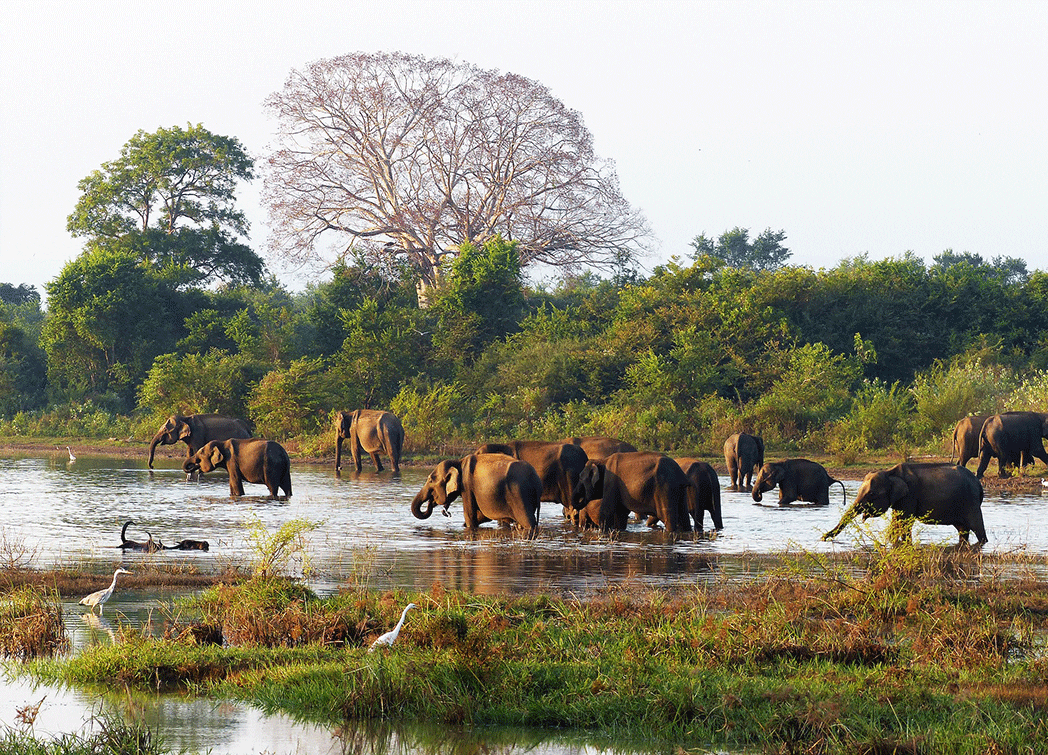Yala is a national park that has been visited countless times by both locals and travellers. But the issue is: will Yala Park still exist in a few years?
Table of Contents
- Sri Lanka’s inherent potential for wildlife tourism
- Trip to Yala National Park
- Excursions to Yala National Park
- Yala is the home of leopards.
- What is the current state of Yala National Park?
- The effect of stress on creatures
- What are the issues that must be effectively addressed?
- Can this trajectory be reversed?
Dr. Sumith Pilapitiya, an environmental scientist and former director-general of the Department of Wildlife Conservation, recently spoke at the WNPS monthly lecture about the impending devastation of Yala, urging Sri Lankans to take immediate action.
Sri Lanka’s inherent potential for wildlife tourism
“Wildlife tourism could be the biggest driver for the growth of tourism in Sri Lanka,” said Pilapitiya. He cited several countries, such as South Africa, whose annual direct tourism impact is ten billion dollars. He explained that the desire to promote wildlife tourism and the ability to do so are two distinct factors. According to a study conducted among Asian nations, Sri Lanka ranks first in the category of observability.
This means that it is extremely simple to see wildlife in Sri Lanka and that we can begin to see wildlife within a few minutes of entering a Sri Lankan park. Sri Lanka is also ranked first in terms of its potential for wildlife tourism, and Pilapitiya explained that this means that the assets we require are abundant, citing several distinctive resources that we can brand and market.
Trip to Yala National Park
Yala National Park is frequently included as a component of travel itineraries in Sri Lanka.
Yala National Park has consistently attracted a substantial influx of both domestic and international travellers, encompassing individuals from the immediate vicinity as well as those from elsewhere. The inclusion of a Yala National Park safari is a common feature in the majority of travel packages that are offered for sale in Sri Lanka. The Yala Safari is included in the itinerary of trips along the south coast of Sri Lanka, as well as in adventure tours and nature holidays within the country. The destination in question is widely acknowledged as a highly recommended location for travellers in the southern region of Sri Lanka.
During a recent monthly lecture organised by the Wildlife and Nature Protection Society (WNPS), Dr. Sumith Pilapitiya, a renowned environmental scientist and former director-general of the Department of Wildlife Conservation, addressed the pressing issue of the potential degradation of Yala National Park. Dr. Pilapitiya emphasised the urgency for the citizens of Sri Lanka to promptly engage in proactive measures to avert this impending threat.
Excursions to Yala National Park
Yala National Park is accessible for a day tourfrom Colombo as well as from other beach resorts situated along the west and south coasts of Sri Lanka. Tour firms such as Seerendipity Tours provide a single-day excursion to Yala National Park from the city of Colombo. For those who possess ample time for engaging in sightseeing tours within Sri Lanka, there is the option to undertake a Sri Lanka 2-day tour or a three-day tour of southern Sri Lanka. These tours provide individuals with the opportunity to explore Yala National Park in addition to various other captivating destinations inside Sri Lanka.
Yala is the home of leopards.
According to him, the best locations in the world to observe leopards are Yala and Wilpattu. He also explained that Yala National Park is home to over 40 mammal species and 215 avian species, including six endemic species. He also cited the award-winning photographer Angie Scott, who stated, “If God created a patch of land for leopards on Earth, then it must be Yala.”
Similarly, according to Pilapitiya, Yala National Park is the only national park in the world where an albino elephant lives in the open.
What is the current state of Yala National Park?
Pilapitiya said that tourist numbers have increased by over 1,000% from 2008 to 2017, and the Department of Wildlife Conservation or any other agency would not be geared to manage this increase.
He explained that the department had no choice but to permit Safari jeeps to transport visitors into the park without a tracker. According to Pilapitiya, there was a tracker in every Safari jeep before 2008. However, due to overtourism and a dearth of trained trackers, this is no longer the case.
Pilapitiya listed road fatalities as one of the consequences of overtourism at Yala National Park that have been documented.
He mentioned a tragic circumstance in which leopards were killed in the National Park due to traffic. “Never take photographs at the expense of animals,” continued Pilapitiya.
He also mentioned the harassment of wildlife at wildlife sightings, the sustenance of wildlife, and the alteration of their behaviour as additional effects of this problem. In addition, Yala suffers from a lack of park management and protection, a decline in wildlife populations, and serious habitat problems.
The effect of stress on creatures
According to a study conducted at Uda Walawe, Pilapitiya explained that elephants eat less when surrounded by vehicles because they are in a state of continual stress and are in a protective mode. In his presentation, he also mentioned a study indicating that the presence of humans can alter leopard movement patterns and behaviour, as well as have negative effects on their health, reproduction, and survival. “I’m not saying we should prohibit visitors; all I’m saying is to give the animals some space,” he said.
Pilapitiya questioned whether a natural ecosystem can withstand this kind of maltreatment and still accomplish its goals.
What are the issues that must be effectively addressed?
Pilapitiya identified a number of significant concerns that must be addressed to avert this impending disaster. In addition to the disciplinary issues of safari drivers and passengers, the Department of Wildlife Conservation must address high speed and reckless driving, vehicular congestion, over-marketing Yala as a leopard-sighting destination, a lack of adequate staff and facilities such as patrol vehicles, and poor nature interpretation services. Pilapitiya also emphasised that one of the most important issues to be addressed is the continued political interference that prevents DWC from regulating tourism in Yala.
Can this trajectory be reversed?
Pilapitiya explained that limiting the number of vehicles entering Yala National Park is simpler said than done, given that there are over 700 jeep drivers in the park. If we impose a restriction, the 4×4 drivers’ and hotel industry’s livelihoods will be adversely affected, resulting in an avalanche of political opposition.
Pilapitiya explained that, as a former wildlife manager, he realised that imposing these limits would result in a number of issues. Instead of promptly imposing restrictions on the vehicles, he emphasised the importance of disciplining both the private and safari jeep drivers, as well as the passengers.
In addition, he emphasised the urgency of imposing restrictions on all of the country’s non-overcrowded parks, lest they wind up like Yala.
Additionally, Pilapitiya stated that we should prioritise quality over quantity. He stated that the majority of park visitors claim they do not learn anything during their stay and desire accurate nature interpretation.
This can be done by having a plan for converting Yala into a high-quality wildlife tourism destination, which includes enhancing both the drivers’ and the visitors’ discipline.
Pilapitiya referred to an Aldo Leopold quote in which he stated that we cannot influence human occupancy at this time, but that by developing a better comprehension of the extent of that influence and a new ethic for its governance, we may be able to save Yala from its current predicament.
Pilapitiya stated, “The majority of tourists come to learn something, but we do not provide that; we simply show them the animals.” To preserve our natural resources, he suggested making Sri Lanka a land in harmony with nature.

